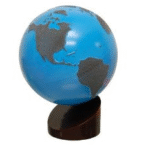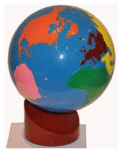The Montessori Red Rods are used to teach Length. There is a definite relation between the ten pieces of each series. In the material for length the shortest piece is a unit of measurement for all the rest; the second piece is double the first, the third is three times the first, etc., and, whilst the scale of length increases by ten centimeters for each piece, the other dimensions remain constant.
Free Lesson Activities
Free Montessori Lesson Activities
Montessori Cutting Flowers Lesson Activity
..
You do not have to be a Genius to get this..
Ever heard of a “Maths Block” ?
Find out why the Montessori Method is a Formula that help will solve this before you even know it is a problem…
Montessori Materials – Butterfly Nomenclature Cards Age 6 to 9
..
FREE Montessori Insect Nomenclatures Age 3 to 6
.
FREE Montessori Continent Nomenclature Cards Age 3 to 6
.
Margaret Homfray Video Lectures
A series of Video lectures recorded by Margaret Homfray who is a well known and knowledgeable proponent of the Montessori Method.
Montessori Interactive Materials, The Continents, Age 3 to 9
This lesson represents the final stage of Abstraction for a child when learning the Continents. This material is interactive and is an optional step that was not part of the original Montessori Method.
Montessori Lessons, The Sandpaper Continents Globe, Age 3 to 6
Read this article to understand how this material is used in the
Montessori Lesson, Puzzle Map of the World, Age 3 to 6
This is an individual exercise done on a floormat. It is used to introduce the child to the two dimensional representation of our world.
Montessori Continent Globe (Bridging) Lesson, Age 3 to 6
This is an individual exercise which aids the child in bridging from three dimensions to two dimensions much the same as we would explain how a map represents the globe in two dimensions.
Montessori Lessons, The Continent Globe, Age 3 to 6
This is a lesson to introduce the child to the locations of the continents and to the names and colors associated with them. Once this and other concrete activities are completed the child progresses to more abstract activities like the Continents Cards(Two Dimensional Cards), and then the Interactive Materials. (*optional)











 '
'